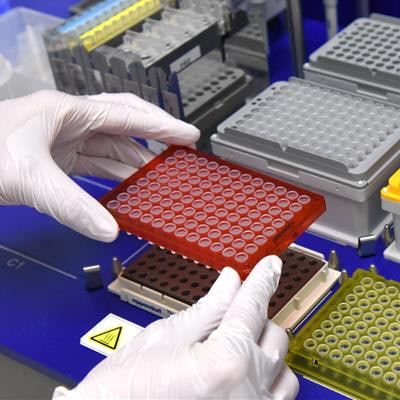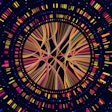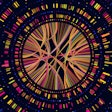
Depending on the reporting lab, whole exome sequencing test results may be incomplete and falsely reassuring if negative, according to a small study published in Clinical Chemistry on January 6. Targeted panel tests may be a better bet for some patients, and labs need to be continually working to improve performance, researchers concluded.
For the study, a research team led by the University of Texas (UT) Southwestern Medical Center double checked findings from 36 clinical exome tests that had been conducted by three major, unidentified U.S. clinical laboratories, noting coverage of genes and nucleotide positions. The study sample included 20 proband patients and 16 parents seen at a pediatric genetic testing clinic.
 Experts double checked clinical tests from three major U.S. laboratories and found that whole exome sequencing routinely failed to adequately analyze large segments of DNA. Image courtesy of UT Southwestern.
Experts double checked clinical tests from three major U.S. laboratories and found that whole exome sequencing routinely failed to adequately analyze large segments of DNA. Image courtesy of UT Southwestern.The researchers found many problems: Each lab, on average, adequately examined fewer than three-quarters of the genes -- with 34%, 66%, and 69% coverage -- and the labs had "startlingly wide gaps in their ability to detect specific disorders," the group noted in a statement about the data.
The results suggest that doctors may be missing genetic disorders and patients and their families may be misled after undergoing expansive genomic testing. False negatives are a real risk due to inadequate coverage, according to the study.
"Using exome sequencing for clinical diagnosis requires recognition of the substantial possibility of inadequate depth and breadth of sequencing coverage at clinically relevant genomic locations," reported Dr. Jason Park, PhD, an associate professor of pathology at UT Southwestern, and colleagues in Clinical Chemistry.
Many ordering physicians are unaware of the problem, the authors noted. Targeted panel testing may be a better option: for example, where the disease is known and an investigation of underlying genetics is needed. Where whole exome sequencing is ordered, providers and patients should demand more complete coverage from clinical exome laboratories, the group advised.
Small -- but representative -- lab sample
Exome sequencing is being performed routinely to check for complex genetic and/or rare diseases, and patients and their families may have expectations for conclusive results. The median age of the pediatric patients tested was 3 years, and testing was most often ordered for the workup of neurological conditions, including epilepsy.
The sample size was admittedly small, but the researchers said the labs in the study are representative of clinical genomics labs in the U.S.
"I consider the three labs in the study to be of generally high quality, and we routinely send patient samples to these labs," Park commented by email to LabPulse.com. "The findings in this study identify an area for improvement in quality for all clinical genomics labs."
The three labs used different methods and products for whole exome sequencing (see table). Technology and/or reagent issues can result in variation between labs, including the method used to turn a patient's DNA into a library of fragments and the probes used to capture the DNA of interest, Park explained. But variation in the quality of results within a lab is related to laboratory practices, and an individual lab can and should address the variation between samples being tested, he said.
| Whole exome sequencing: Comparison of results from 3 major U.S. labs | ||
| Technology | Coverage | |
| Laboratory A | VCRome v2.0 (Roche Sequencing Solutions) or xGen Exome Research Panel v1.0 (Integrated DNA Technologies) | 69% (12,184 of 17,723 genes) |
| Laboratory B | VCRome v2.1 (Roche) | 66% (11,687 of 17,723 genes) |
| Laboratory C | SureSelect XT2 All Exon v4 (Agilent) or Clinical Research Exome (Agilent) | 34% (5,989 of 17,723 genes) |
The authors stressed that labs should be continuously working to improve the consistency of exome-testing performance.
"The use of average measurements in large datasets such as exome/genome is only meaningful when the average is further described in combination with other summary statistics such as standard deviation and coefficient of variation," the authors wrote. "Additional statistics such as genes completely covered will also allow a more accurate assessment of the test's validity and would pressure clinical laboratories to achieve higher consistency."
Park and colleagues also noted that performance may be improved through the auditing of coverage quality and overall performance by accreditation and regulatory inspectors. Another option is expanding the College of American Pathologists (CAP) proficiency testing program for next-generation sequencing to include an evaluation of coverage consistency between laboratories, they suggested.
"Although genomic testing is complex, traditional quality-control tools such as control charting may be useful in visually demonstrating the importance of intersample sequencing assessment for entire genes or specific variant locations," the authors wrote.



















